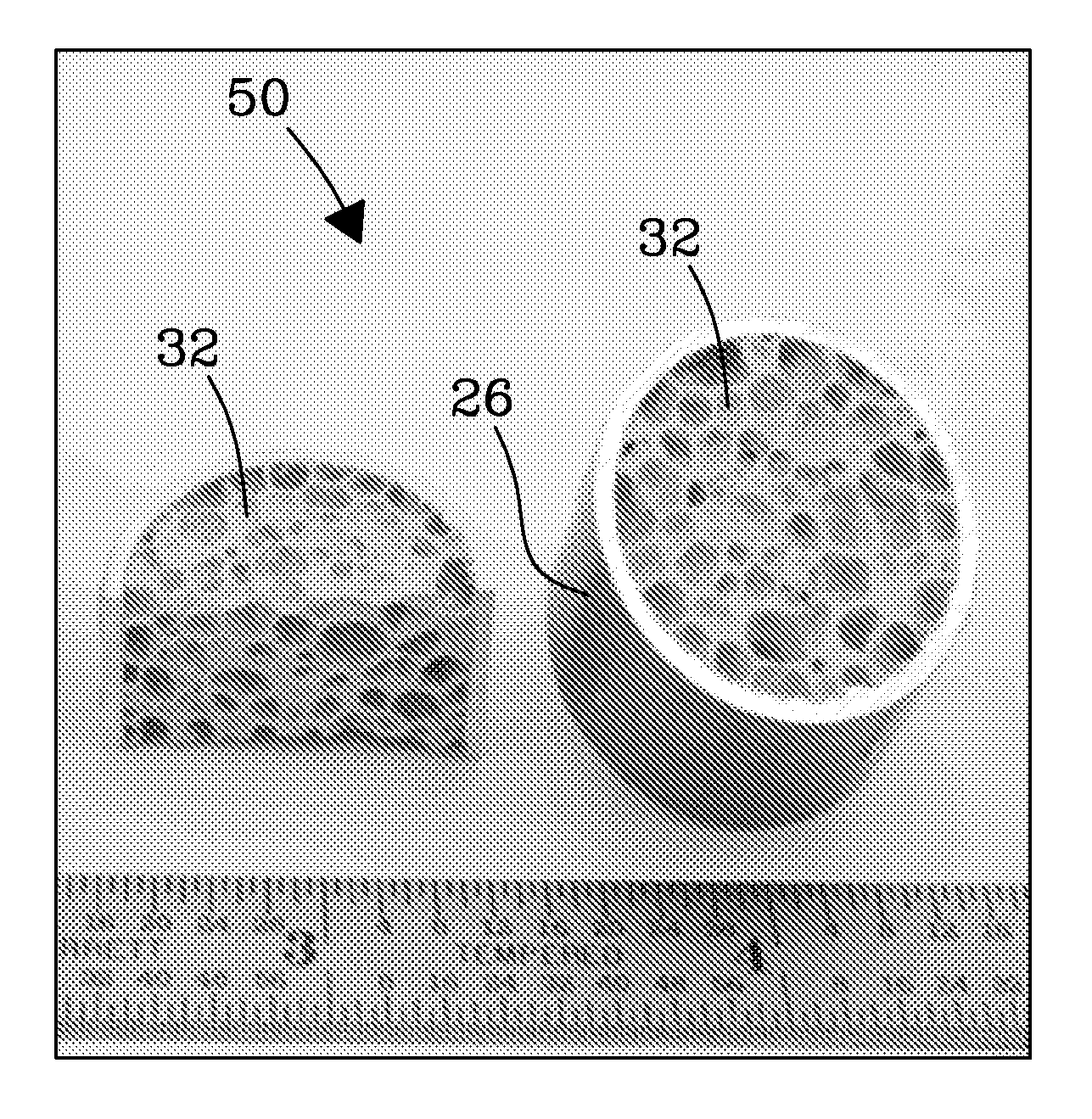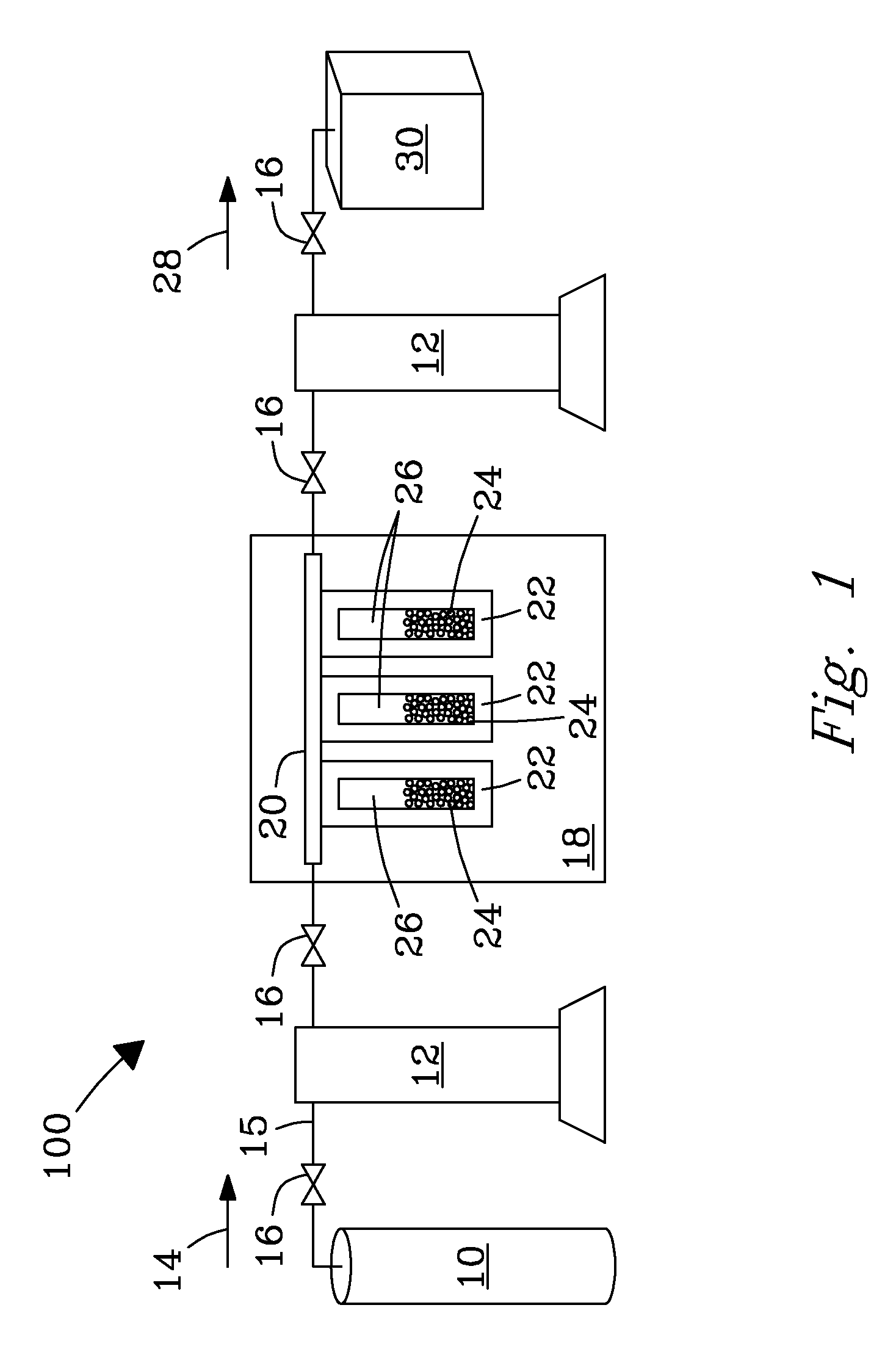High performance foam and composite foam structures and processes for making same
a composite foam and high-performance technology, applied in the field of polymer foams and foamcontaining structures and methods of making, can solve the problems of high processing temperature, high energy absorption, and inability to meet the requirements of high stiffness, high strength and energy absorption, and achieve the effect of reducing pressure and temperature and great mechanical properties
- Summary
- Abstract
- Description
- Claims
- Application Information
AI Technical Summary
Benefits of technology
Problems solved by technology
Method used
Image
Examples
example
[0102]˜400 mg of pellets of VECTRA-B130 LCP 24 were placed inside a glass vial container 26 (dimensions ˜35 mm in length and outer diameter of ˜8 mm). Pellets filled vial container 26 up to approximately half the available height. Glass container 26 was placed inside a high pressure containment vessel 22 that was connected to a stainless steel manifold 20. Foaming system 100 was assembled as follows. Glass vials 26 containing pellets of LCP 24 were placed within high pressure containment vessel 22 and installed within the high pressure foaming manifold 20 located inside oven 18. System 100 was purged ˜10 minutes with flowing argon gas, and then pressurized to about 4200 psi with argon, and stabilized. Oven 18 was then energized to initiate heating in oven 18. Temperature was raised incrementally to a temperature of 320° C. (˜15 minutes), and system 100 was held isothermally at 320° C. and 4200 psi argon pressure for 60 minutes to infuse the LCP with the fluidized gas. Following the ...
PUM
| Property | Measurement | Unit |
|---|---|---|
| pressure | aaaaa | aaaaa |
| specific energy absorption | aaaaa | aaaaa |
| temperatures | aaaaa | aaaaa |
Abstract
Description
Claims
Application Information
 Login to View More
Login to View More - R&D
- Intellectual Property
- Life Sciences
- Materials
- Tech Scout
- Unparalleled Data Quality
- Higher Quality Content
- 60% Fewer Hallucinations
Browse by: Latest US Patents, China's latest patents, Technical Efficacy Thesaurus, Application Domain, Technology Topic, Popular Technical Reports.
© 2025 PatSnap. All rights reserved.Legal|Privacy policy|Modern Slavery Act Transparency Statement|Sitemap|About US| Contact US: help@patsnap.com



